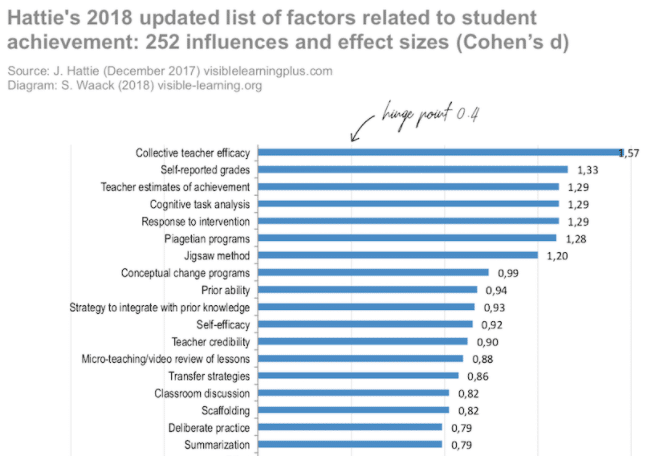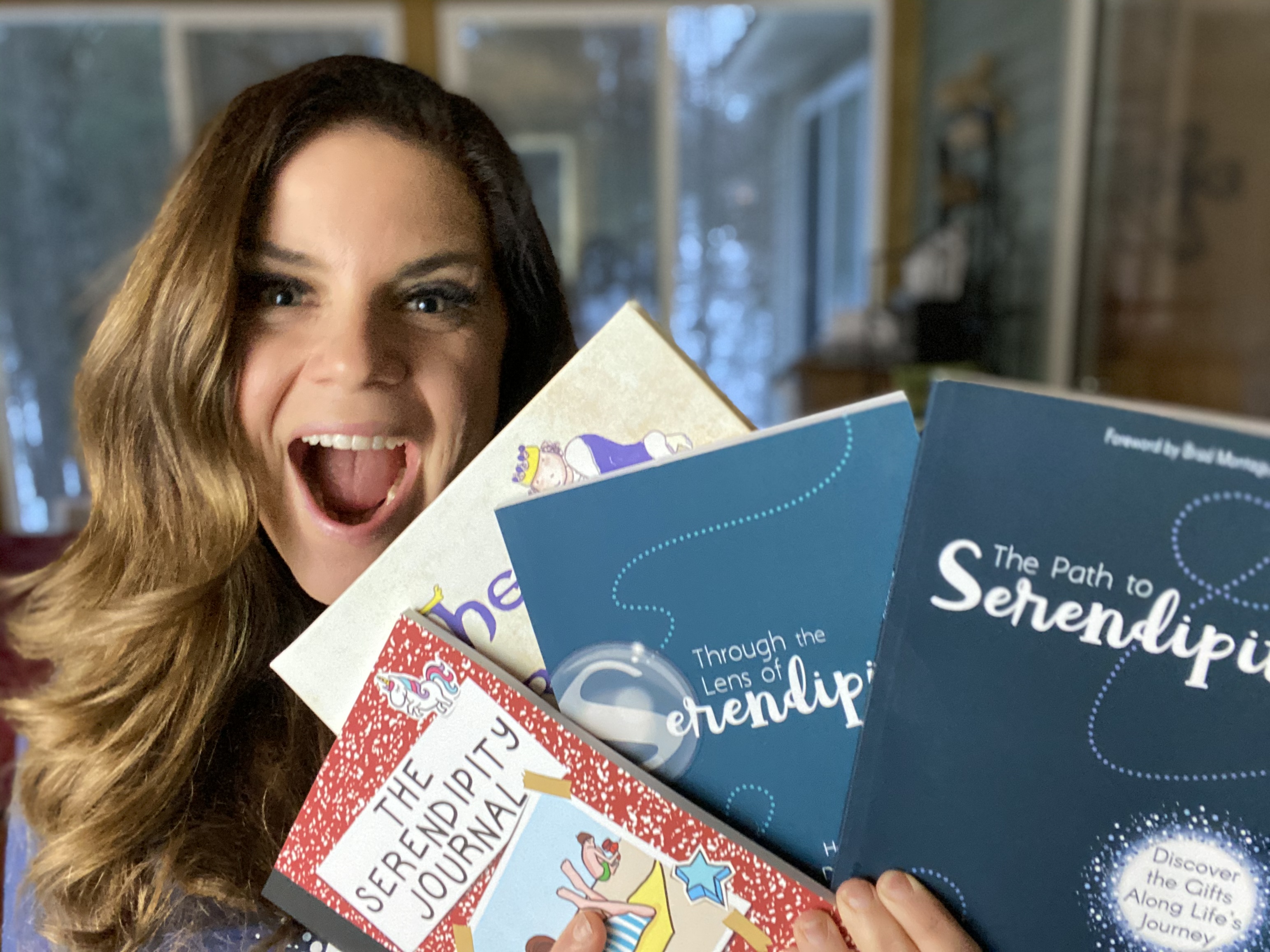What a blessing it is to have research that tells us what teacher and school practices have the biggest impact on student achievement. We can all agree that time is a precious commodity during the school day and it is important to maximize our efforts in the classroom to support student achievement. Let’s talk about John Hattie’s research on the effect size of classroom, home, and school influences. Here is a graphic from the Visible Learning website that lists the practices with the largest effect size:

You probably know all about effect size and what it means in regards to Hattie’s work, but for some reason I tend to get fuzzy about the details. I definitely know that the larger the effect size the better, but it is always helpful to refresh my memory about the rest of the stuff. So, through research, Hattie determined that the average effect size for all interventions he studied was 0.4 and he calls that the “hinge point”. That means that interventions that have an effect size greater than 0.4 are better than average. “Effect size” is commonly used in research when figuring out the relationship between two things–in Hattie’s research we are figuring out the relationship between specific interventions/influences and student achievement.
Lately I have found myself thinking about “Teacher estimates of achievement”–I think about it when I am driving, in the shower, as I am laying down trying to sleep at night. I know, I know, exciting life, eh? Before I tell you why teacher estimates of student achievement is on my mind, let’s talk about what it is using Hattie’s own words.
Teacher estimates of achievement is the teacher’s belief about the level a student is able to achieve based on past experiences.
-John Hattie
We know that in order to not just have high expectations for students but to know that they are capable of achieving great things, it is implied that teachers have strong, positive relationships with students. Before any learning can happen, students need to feel safe and valued. Once trusting relationships are established, then teachers can get about the business of communicating that they know that they are capable of great things.
In other words…
If you build it, they will come.
-Field of Dreams (incredible 1989 movie)
Okay, we understand Hattie’s research on effect size and what it means, and now we have an understanding of what the third ranked intervention of “Teacher estimates of achievement” means. We should be feeling very accomplished at this point! True confession–as I have been thinking about Hattie’s research in relation to estimates of achievement, I haven’t been thinking about students at all. I have been thinking about teachers.
Would “principal estimates of teacher achievement” have the same effect size on teacher learning? Would that translate into a similar positive impact on student achievement?
Principal friends, instructional coaches, other administrators and school leaders, do you believe in your teachers’ capacity? Can I sidebar into my aversion to the way “capacity” is used when talking about teachers? If we think that it is our job as leaders to build capacity in teachers, then are we saying that they don’t already have the capacity? What if we instead believe that EVERY. SINGLE. TEACHER. not only has the capacity to learn and grow in their practice but that they want to learn and grow? Would that increase principal estimates of teacher achievement and in turn positively impact student achievement?
If we believe this…
If teachers don’t believe know that every one of the students in their classroom has the capacity and ability to learn, to strengthen their skills, to achieve amazing things, what business do they have in the classroom?
Do we also believe this…
If principals don’t believe know that every one of the teachers in their school has the capacity and ability to learn best practices, to strengthen their skills, to do amazing things for students, what business do they have leading them?
I cannot help but wonder how this shift in thinking could impact teacher evaluation–is this the shift that will begin the process to transform teacher evaluation from something to be feared and cause division to something that can help strengthen relationships and propel teachers forward in their goals?
How could this shift in thinking impact relationships between principals and teachers?
How could removing fear from the environment for teachers and replacing it with empowerment impact collegial relationships? Teacher-student relationships? How could it transform the school culture?
I think we are onto something and I would love to hear your thinking about this seismic shift. Do you know that all teachers can and want to learn and grow? If so, how does that impact your relationships, student achievement, and school culture? Please share your comments below or tag me on social media. We are better together.


You continue to nail it Allyson Apsey! YES– we as principals must BELIEVE in EVERY TEACHER that we have in our building. WE must take it upon ourselves to help, support, nurture and grow our teachers. WE must take it upon ourselves to nurture and grow our own learning to be prepared to help EVERY teacher. For me, this year’s teacher evaluation is more about the conversation on what is working well and what do you (the teacher) want to strengthen? It seems like every year I am searching and tweaking my approach to the evaluation. Thank you Allyson for your post back in the summer to help me prepare for my “old school” approach of paper and pencil–no laptop observations. I would love to keep this conversation going throughout our state and nation! #bettertogether
Love this Amie!! Thankful to learn and grow alongside you!